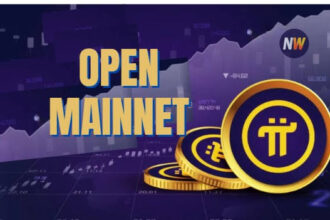The Pi Network has gained widespread attention since its inception, with millions of users worldwide participating in its mobile mining phase. As the project approaches its mainnet migration, many Pi Network pioneers are eagerly anticipating the launch and use of Pi as a fully functional cryptocurrency on a public blockchain. This detailed guide provides comprehensive insights into key areas of Pi Network’s token migration to mainnet, including Know Your Customer (KYC) requirements, Pi Coin IOUs, Pi Utilities, and exchange listings.
Understanding Pi Network’s Mainnet Migration
Pi Network’s mainnet migration represents the transition from the mobile mining phase, where users could accumulate Pi tokens through the app, to an operational, decentralized blockchain. During the mainnet phase, Pi coins will be secured by a blockchain rather than relying on the Pi app. This transition aims to ensure that Pi Network becomes a decentralized cryptocurrency with its own blockchain, similar to Bitcoin and Ethereum, allowing transactions to occur independently of the app.
The migration process to the mainnet is expected to happen in phases:
Phase 1 focused on building the user base and allowing users to mine Pi on their mobile devices.
Phase 2 introduced a testnet, where developers and pioneers could test decentralized apps (dApps) and nodes to improve network functionality.
Phase 3, the mainnet, is the final stage where the Pi Network token becomes publicly tradable, the network is decentralized, and Pi coins can be utilized within and beyond the Pi Network ecosystem.
Know Your Customer (KYC) Requirements for Pi Network Migration
KYC is an essential step for all Pi Network pioneers who want to transfer their Pi tokens from the mining app to the mainnet. KYC procedures are mandatory for Pi Network to comply with global anti-money laundering (AML) and counter-terrorism financing (CTF) laws. The KYC process helps to ensure that only verified users can participate in the mainnet migration, thus enhancing the security and legitimacy of the network.
How KYC Works in Pi Network
- Verification of Identity: Each pioneer needs to upload government-issued identification, such as a passport or national ID, to verify their identity. Although pioneers must be invited to complete KYC before he or she can be able to start the process.
- Liveness Check: Pi Network may implement a liveness check to confirm that the person submitting the KYC application is real and matches the identity document.
- Background Screening: The Pi Network may conduct background checks to identify potential risks, such as sanction lists, to ensure compliance with regulatory requirements.
Steps for KYC Submission
1. Log into the Pi Network App: Check for KYC eligibility in the app.
2. Submit Identity Documents: Upload a clear picture of the government-issued ID.
3. Complete Liveness Check: Follow on-screen instructions to complete the liveness verification.
4. Await Approval: The review process may take a few hours to several days.
5. Receive Approval Notification: Once approved, users will be notified in the app and can proceed with mainnet migration.
The KYC requirement ensures that Pi Network maintains integrity and security within the platform, reducing fraudulent activities and protecting users’ assets. Users who fail to pass KYC will be unable to migrate their tokens to the mainnet, thus forfeiting their accumulated Pi.
Understanding Pi Coin IOU
During the early stages of Pi Network, some crypto exchanges introduced “Pi Coin IOUs” as speculative assets to represent the Pi tokens that users were mining on the Pi Network app. These IOUs were not issued or endorsed by the Pi Network team, meaning they are unofficial and do not represent actual Pi coins. An IOU (I Owe You) is a placeholder, essentially a promissory note or a future claim on Pi tokens.
Why IOUs Exist and How They Work
- Speculation by Traders: Crypto enthusiasts and traders began buying and selling Pi Coin IOUs as a way to speculate on the future value of Pi.
- Lack of Transferability: Since the actual Pi tokens were confined to the mobile app and could not be transferred, IOUs offered a way for external platforms to trade on the idea of Pi’s value.
- No Official Endorsement: Pi Network’s core team has warned against purchasing Pi Coin IOUs, as they do not represent real Pi tokens and may not have value once Pi officially migrates to the mainnet.
After the mainnet launch, these IOUs may no longer be valid or could even be rendered useless, as they are separate from the actual Pi tokens mined and verified on the official Pi Network blockchain.
Risks Associated with Pi Coin IOUs
- Risk of Loss: Buyers of Pi IOUs on exchanges are at risk of losing their investments, as there is no guarantee that IOUs will convert to real Pi tokens.
- Unreliable Pricing: The price of Pi IOUs on exchanges may not reflect the true value of Pi once it’s live on the mainnet, leading to volatility.
- Lack of Control: Users who own Pi IOUs do not have custody of actual Pi tokens within the Pi Network app, thus limiting their ability to transfer or use them once the mainnet is live.
Pi Utilities and Ecosystem Development
The mainnet migration enables pioneers to start using their Pi tokens within the Pi Network ecosystem, which includes decentralized applications (dApps), services, and utilities. Pi Network aims to build a thriving ecosystem of Pi-enabled utilities to increase Pi’s value by promoting real-world use cases. As Pi Network is designed to function as a utility-based cryptocurrency, its ecosystem focuses on providing actual applications and services that accept Pi.
Key Areas of Pi Utilities
- Decentralized Applications (dApps): dApps built on the Pi blockchain can serve various purposes, from social networking and e-commerce to gaming and educational services, where users can pay or receive Pi for services.
- Marketplace for Goods and Services: Pi Network pioneers can use Pi tokens to purchase goods and services in marketplaces within the app. For example, pioneers can buy digital services, products, or pay for certain utilities.
- Peer-to-Peer (P2P) Transactions: Pi Network pioneers can transfer Pi tokens directly to one another, fostering a decentralized P2P economy. This encourages the use of Pi as a currency rather than merely a speculative asset.
- Developer Incentives: The Pi Network aims to incentivize developers to build apps and services that integrate Pi tokens. This could help boost the number of Pi utilities, adding more value to the Pi ecosystem.
These utilities help establish Pi as a currency with actual purchasing power, rather than simply a store of value or speculative investment.
Listing on Exchanges: When Will Pi Be Tradeable?
Pi Network has taken a cautious approach toward exchange listings. Unlike other cryptocurrencies that rush to exchanges soon after their ICO or token generation events, the Pi Network team has expressed concerns about premature listings. Before Pi is listed on exchanges, they aim to ensure that the network is robust, secure, and has established sufficient utilities.
Key Aspects to Consider for Pi’s Exchange Listing
- Timing and Market Demand: The Pi Network team plans to wait until the mainnet is stable and KYC verification is completed for a significant portion of the community. This helps avoid extreme volatility and ensures that the actual supply of Pi in circulation reflects its real community support.
- Regulatory Compliance: By ensuring KYC compliance, Pi Network minimizes the risk of regulatory hurdles, making it more attractive for major exchanges like Binance, Coinbase, or Kraken to consider listing Pi.
- Avoiding Premature Speculation: By discouraging IOU trading and delaying exchange listings, Pi Network aims to create a strong utility-based ecosystem before introducing Pi to the speculative market, which can often cause significant price volatility.
Listing Process
Once Pi is ready for exchange listing, it will likely follow these steps:
1. Application and Review: Pi Network team applies or collaborates with exchanges interested in listing Pi.
2. Liquidity Provision: Exchanges may collaborate with liquidity providers to ensure a smooth market for Pi.
3. Market Pairing: Exchanges may introduce Pi trading pairs with other cryptocurrencies such as USDT, BTC, or ETH, providing multiple avenues for trading.
4. Staggered Rollout: Initial listings may happen on select exchanges, with the possibility of broader availability over time as demand and network maturity increase.
Using Pi Tokens on the Mainnet
After migrating to the mainnet, pioneers can use their Pi tokens in various ways beyond merely holding them for potential price appreciation. The Pi Network envisions Pi as a utility-focused cryptocurrency that can support various transactions and services within its ecosystem.
Examples of Using Pi on the Mainnet
- Transaction Fees: Similar to other blockchains, Pi Network may require small transaction fees in Pi for sending tokens across the network.
- Access to Premium Services: Certain services or features within the Pi ecosystem may require users to spend Pi.
- Microtransactions: Pi Network aims to make Pi a currency for microtransactions, which can be especially useful in gaming, tipping, or subscription-based services within the ecosystem.
- Staking and Network Participation: Pioneers may be able to stake Pi to support the network’s security or participate in governance decisions.
Future Prospects and Challenges
As Pi Network moves toward mainnet migration and exchange listing, it faces challenges and opportunities that will shape its future:
- Achieving Widespread KYC Completion: KYC participation remains essential for moving Pi tokens to the mainnet. However, varying access to technology and documentation could make this process challenging for some users.
- Network Security and Decentralization: Transitioning to a decentralized blockchain is crucial to maintaining the network’s credibility and security. Unlike the centralized setup during the mining phase, the mainnet will require node operators and miners to validate transactions and maintain the ledger. This will involve implementing consensus protocols that support security while allowing efficient transaction verification.
- Scalability: As the Pi Network user base grows, scalability will be a key concern, especially if Pi is widely used in various dApps and transactions. To support a large number of transactions, the Pi Network will need to ensure its blockchain can handle high transaction volumes without compromising speed or security.
- Building a Sustainable Ecosystem of Utilities: Pi Network’s success depends largely on the establishment of real use cases and utilities. If pioneers can use Pi for a variety of goods and services, it could help stabilize and grow Pi’s value. The Pi Network team is actively encouraging developers to create apps and services that accept Pi, which will be vital to increasing its adoption as a currency.
- Market Perception and Value Stability: Once Pi is listed on exchanges, its value will fluctuate according to supply and demand. Like any other cryptocurrency, this will expose Pi to market speculation, which can lead to volatile price movements. A stable and utility-driven ecosystem will help mitigate extreme price volatility and establish Pi as a functional digital currency rather than a speculative asset.
Getting Started on the Pi Mainnet: Practical Steps for Pioneers
For pioneers ready to migrate their Pi to the mainnet, here are some practical steps to ensure a smooth transition and optimal use of Pi on the mainnet.
1. Complete KYC Verification: Ensure you complete the KYC process as soon as it is available in the app. Without KYC, you will not be able to migrate your mined Pi to the mainnet.
2. Set Up a Pi Wallet: To interact with the Pi Network mainnet, pioneers need a Pi wallet where they can store their Pi tokens. The wallet setup process is generally available within the Pi app, and it’s essential to securely back up your wallet’s private key or seed phrase.
3. Verify Migration Eligibility: Once you complete KYC, check your eligibility to migrate in the Pi app. The app should display options for migrating your tokens to the mainnet. You’ll need to approve the migration and confirm your mainnet wallet address.
4. Familiarize Yourself with Pi Ecosystem Apps and Utilities: Explore apps and services within the Pi ecosystem where you can use Pi. As more developers and businesses join the network, additional options will likely become available.
5. Engage in Community and Network Activities: Join the Pi community to stay updated on network changes, utility development, and new features. Engaging with other pioneers can help you learn about effective ways to use your Pi tokens and participate in community-driven events.
6. Monitor Exchange Listings and Market Trends: If you plan to trade Pi, stay informed about exchange listings and market conditions. Be cautious, especially in the early stages, as market volatility can be high.
Future Vision for Pi Network
The Pi Network team envisions Pi as a widely adopted digital currency with real-world utilities and a strong, sustainable ecosystem. Their roadmap for the future involves several potential developments, which could significantly impact Pi’s adoption and utility.
- Wider Acceptance for Pi Payments: The Pi Network aims to collaborate with businesses and services that accept Pi as payment, similar to other cryptocurrencies used in e-commerce. By expanding the merchant base that accepts Pi, the network hopes to create a real-world economy around Pi.
- Decentralized Governance: In line with the ethos of decentralization, Pi Network may implement a governance system that allows pioneers to vote on key network decisions, such as protocol upgrades or community guidelines.
- Innovations in dApps and Services: The network hopes to see a variety of dApps emerge, from social media and content platforms to payment gateways and e-commerce marketplaces. These applications will likely drive significant demand for Pi, fostering a self-sustaining digital economy within the Pi Network.
- Interoperability with Other Blockchains: In the future, Pi Network may explore ways to enhance interoperability with other blockchains, enabling seamless transfer and usage of Pi across different networks. This could potentially include partnerships with cross-chain platforms or the implementation of bridges to other blockchain networks.
- Education and Outreach: To expand its user base and attract non-crypto users, Pi Network plans to promote educational resources about blockchain, digital currency, and the benefits of a decentralized economy. This outreach could play a critical role in driving Pi’s adoption among mainstream audiences.
The Pi Network mainnet migration marks a transformative phase for the project, positioning Pi as a fully-fledged cryptocurrency with a vision of real-world utility and mass adoption. From ensuring KYC compliance to setting up an ecosystem of utilities, Pi Network is taking several strategic steps to ensure its success as it enters the public blockchain space.
For pioneers, this transition offers an opportunity to actively participate in the Pi ecosystem and explore a digital currency that emphasizes utility and accessibility. However, users should proceed with caution regarding Pi Coin IOUs and speculative trading, as the project’s success will largely depend on its organic growth, community engagement, and ability to foster a robust economy around Pi.
As Pi Network continues to evolve, pioneers and stakeholders should stay informed and engaged to make the most of the potential offered by the mainnet. With a solid focus on security, regulatory compliance, and ecosystem development, Pi Network could emerge as a significant player in the blockchain space, delivering both value and functionality to its community.

















REWARD CODE: 257091
Keep mining Pi! Reactivate if you have given up! Pi is well worth your few second a day effort. It is the only free mining Layer 1 crypto project with over 100 million people joined and 55 million miners active. Remember , money goes to wherever people are. Pi communities in over 230 countries worldwide are the most vibrant communities. It has over 3.1 million followers in X and will soon catch up with the 2nd most popular crypto Ethereum ‘s 3.2 million. The long journey of 5 year development is near completion. Pi Network has plan to open mainnet in 2024, your efforts will be greatly rewarded soon! The Pi IOU has been trading in several exchanges since January 2023 and the price is at over $40/Pi. Why do you think that it can commend such a high price before it even officially goes public? Please think harder!
Mine Pi for free on your phone! I am sending you 1π! To claim your Pi, follow link https://minepi.com/yajer72 use (yajer72), your invitation code.
I am sending you 1π! Pi is a new digital currency developed by Stanford PhDs, with over 55 million members worldwide. To claim your Pi, follow this link https://minepi.com/daiv101 and use my username (daiv101) as your invitation code.